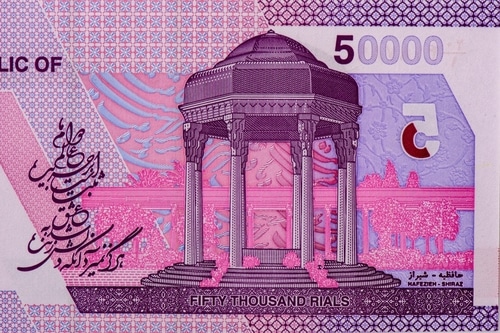The Iranian rial (IRR) is a currency that carries significant historical, cultural, and economic weight. It is the official currency of Iran and an essential aspect of the lives of its 85+ million citizens. However, for travelers, businesses, or individuals with loved ones in Iran, navigating the complexities of the Iranian rial can sometimes be daunting.
This guide breaks down everything you need to know about the Iranian rial, from its historical background to practical tips for handling it. Whether you’re sending money to family in Iran, traveling for business, or interested in understanding foreign currencies, this post will clarify the key details.
A Brief History of the Iranian Rial
The history of the Iranian rial dates back to 1798 when it was first introduced as a silver coin during the reign of the Qajar dynasty. At that time, the rial was part of a system that included other coins like the toman, which was worth 10 rials. While the rial became Iran’s main currency in 1932, the toman remains an informal unit still in use today in everyday transactions.
Over the years, the rial has faced significant challenges due to political, economic, and international factors. Its value has fluctuated greatly, with periods of hyperinflation impacting its purchasing power. Despite these obstacles, the rial remains an integral part of Iran’s economic identity.
Understanding the Value of the Iranian Rial
Since Iran’s economy has been subject to political sanctions and inflationary pressures, the exchange rate of the Iranian rial can be complex. Here are a few key points to keep in mind about its value and exchange rates:
- Official vs. Unofficial Exchange Rates: Iran operates with multiple exchange rates. The official rate is set by the Central Bank, while the free-market rate, often more aligned with global demand, might be significantly different.
- High Denominations: Due to inflation, the rial exists in very high denominations, with banknote values running into millions. For instance, a common note is the 1,000,000 rial (or “1 million rial”) banknote.
- Currency Symbols: The rial is officially written as ریال in Farsi and abbreviated as IRR. However, locals often refer to prices in toman, where 1 toman equals 10 rials. This dual usage can be confusing, but it’s something to be mindful of when dealing with payments in Iran.
Example Conversion
While exchange rates fluctuate, a recent free-market exchange rate might show 1 USD = 42,000 IRR (note this is just an example; check for accurate, up-to-date rates). This means that making larger payments would often involve millions of rials.
If you’re sending money to Iran, it’s essential to choose a reliable service that provides competitive rates and transparency in its fees.
How the Iranian Rial is Used
For anyone interacting with the Iranian rial, this currency comes into play in a variety of ways. Below are the major scenarios where the rial is most commonly used:
Everyday Transactions
Iranian citizens predominantly use the rial in their day-to-day transactions, whether paying for groceries, transportation, dining, or other services. However, as noted earlier, prices are often quoted in tomans, requiring individuals to perform the quick mental conversion (e.g., a price listed as “100,000” usually means 1,000,000 rials).
E-Commerce and Online Payments
While international e-commerce may be limited due to banking restrictions, domestic players in Iran operate several online platforms where rial-based transactions are standard. This includes online retailers, travel booking websites, and food delivery services.
International Money Transfers
Many Iranians living abroad send money to loved ones back home. This is where conversion transparency becomes critical, as exchange rates and fees can significantly impact the final amount received in rials.
If you’re sending money to Iran, using a service that prioritizes competitive exchange rates and low fees can make a significant difference. Trustworthy money transfer platforms ensure that what you send truly supports your family overseas.
Tips for Handling the Iranian Rial
Whether traveling to Iran or regularly interacting with the rial for personal or financial reasons, follow these tips to enhance your understanding and use of the currency:
1. Familiarize Yourself with Toman Conversions
If you’re planning a trip to Iran, it’s helpful to grasp the everyday use of tomans rather than rials. For example, if someone says an item costs “10 tomans,” they mean 100 rials. Having this knowledge upfront will reduce confusion when making purchases.
2. Learn the Current Exchange Rate
Keep tabs on fluctuating exchange rates between the rial and your local currency. Exchange rate apps or a credible international money transfer service can help you stay updated and ensure you’re aware of the best rates available.
3. Use Reliable Money Transfer Services
Sending money to Iran can be straightforward and secure if you use the right platform. Look for services that outline fees clearly, offer reasonable exchange rates, and ensure delivery speed to give your recipient peace of mind.
4. Carry Cash
Although Iran has a sophisticated banking network, international credit and debit cards are generally not accepted due to sanctions. Carrying physical rials or tomans for transactions is essential.
5. Watch Out for Counterfeits
Counterfeit currency is not uncommon, especially when dealing with large denominations in cash. Always verify the authenticity of bills and rely on official banks and exchange agencies for currency exchange.
Why Understanding the Iranian Rial Matters
Whether you’re traveling to Iran, running a business with connections there, or sending support to family, understanding the Iranian rial is an invaluable skill. It helps you appreciate the realities of Iran’s unique economic structure and empowers you to make informed financial decisions.
